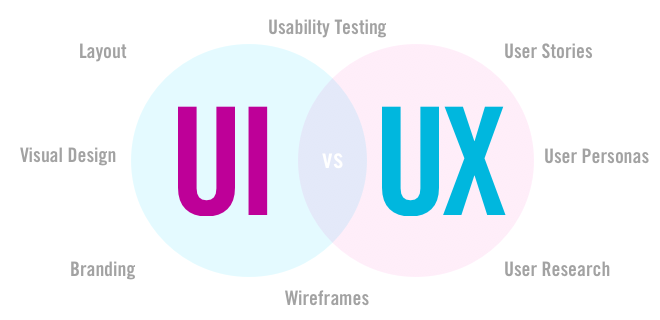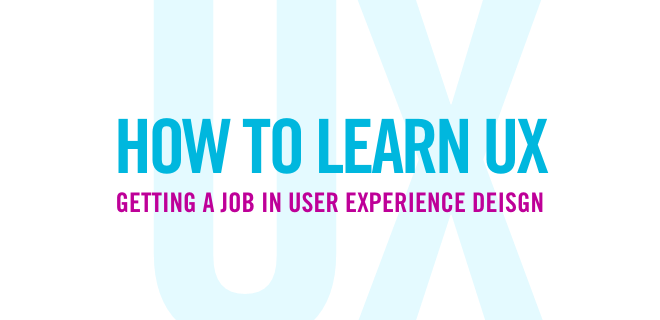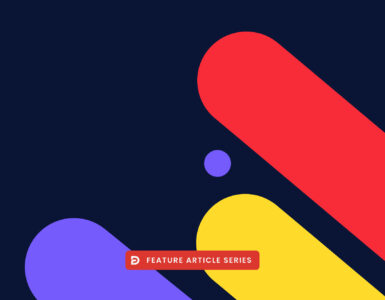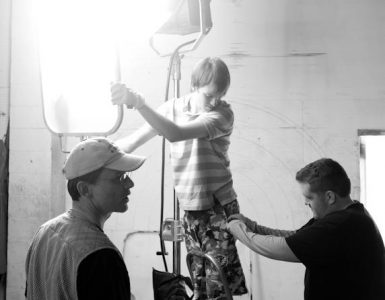If you’re looking for to help you learn how to break into the field of User Experience, or UX, you’ve come to the right place.
We’ll explore the two main areas of UX in the coming weeks: research and design. In the category of research, you’ll learn how to conduct interviews, as well as how to evaluate and analyze systems based on the principles of design that we’ll be teaching you. In the category of design, you’ll learn how to use your knowledge of the history of effective design to generate solutions and create prototypes for every level of a project.
Are UI and UX design the same thing?
UI design, or user interface design, is an area of design that focuses on visual design elements, including colors, patterns, branding, typography, etc. When it comes to product design, UI design would be the process that decides what color a product would be to make it visually appealing.
UX design, or user experience design, is the goal of improving a customer’s experience with a product or service through the use of effective design planning and decision making. UX design experts take their knowledge of customer habits and behavior to anticipate a reaction to a product or service, and adjust design accordingly.
UX is not UI
Where UI might focus on determining what color the design team thinks that a product should be, UX design would be focusing on how that product will be received by customers.

People who perform UX design work are often called “UX designers.” But while they are called designers, their roles are much different than UI designers. UI designers focus on how they can use their own artistic skills and capabilities to make a product look good. UX designers focus on how that product and its design is going to help customers solve a problem, how those customers will view the product, and what they might prefer in terms of design and implementation.
Because the design of a product, including its color, patterns, typography, etc., will affect how it is perceived by a customer, UI is a part of UX design. At the end of a project, a UX designer will likely have had a big role in the UI design phases.
Why should you get involved in UX design?
Any time you’re considering a career change or if you’re just looking to break into the job market, it’s a good idea to look for a field that’s not only in high demand now, but also that promises to be in the future as well. UX design is one such field.

UX designers are in demand to create and improve products and services in a variety of industries. Unlike other fields, UX design is only further boosted by technology. It isn’t a job that’s likely to be replaced by automated systems anytime soon, as it relies on UX designers’ abilities to understand human nature and habits. Thanks to the high demand in this field, you can expect an above-average salary.
In addition, if you’re someone who enjoys a challenge, the constantly changing demands, problem-solving, and design aspects of this career are sure to keep you interested. Unlike other design careers, UX design is easy to get started on without having years of previous experience or expensive degrees.
What does it take to become a UX Designer?
If you think that an eye for design or artistic abilities are enough to land you an entry-level spot as a UX designer, think again. Hiring managers will be looking for more than just skills. They’ll also be looking for a variety of traits that will help you succeed in your new position.
A few traits they’ll be looking for are:
- Innate empathy and situational awareness
- Passion for the craft.
- Curiosity about psychology and technology.
- Ability to learn quickly.
- Receptiveness to feedback (willingness to accept constructive criticism and act on it).
You’ll need to be curious about human nature and psychology to be successful in UX design. In this field, you’ll need to be able to put yourself in the shoes of a variety of customers of different ages, backgrounds, preferences, and geographical areas. If you aren’t able to empathize with others or be able to interpret a creative brief, you won’t be able to imagine how they’ll perceive a product or service, and you won’t be able to design it to fit their wants or needs.
Sorry, there are no polls available at the moment.As with any job that requires starting from the beginning each time a new project comes in, you’ll need to be passionate about what you do. Hiring managers will want to feel as though you’ll tackle each new design project as if it were your first, rather than getting burned out after your first few product or service designs.
While you may not need advanced technology skills to get started, the more of these skills you have, the better you’ll do during your interview and in your new position.
What to do next?
Come back next month as we expand our exploration of how to to learn UX design. As with any job that requires starting from the beginning each time a new project comes in, you’ll need to be passionate about what you do. Hiring managers will want to feel as though you’ll tackle each new design project as if it were your first, rather than getting burned out after your first few product or service designs. Keep curious, continue to learn and apply yourself, and above all, enjoy the process!





